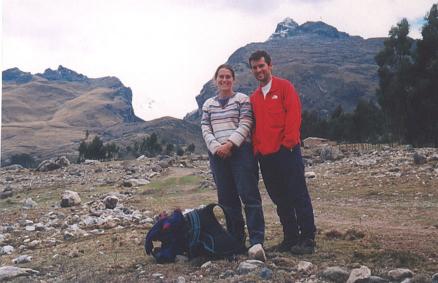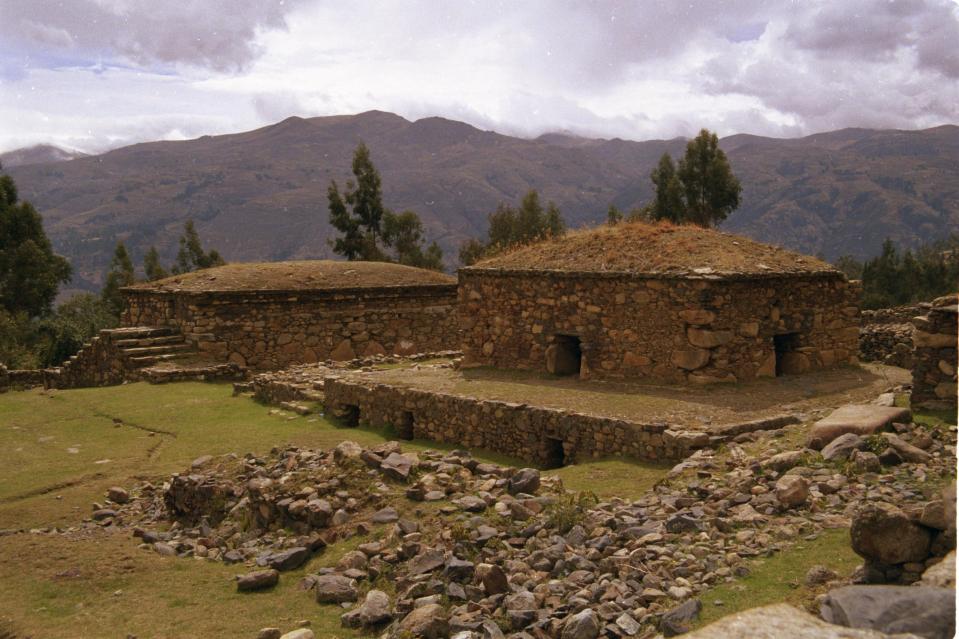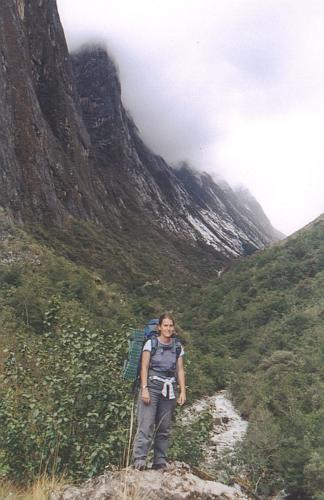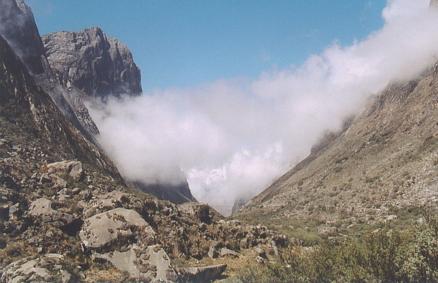30 October 2002: Huaraz, Peru
Subject: Peru
Well we're back from a couple of nights camping in the Cordillera Blanca, and Huaraz seems to have recovered from the disturbances of a few days ago. In a couple of hours we'll be getting on the overnight bus back to Lima, and so now I have some time to write up what we've been doing.
More about Lima
I didn't write much about Lima before as the Guinea Pig trip took up most of my report. But you must hear all about the craft markets, since we spent more time there than anywhere else, and how Lima is like Bournemouth.
¡Lima is like Bournemouth! ¿How can that be? Well for a start they are both on the coast and have long beaches where it is too cold for anyone to swim without a wetsuit. But the similarities became totally clear when we took a walk along the beach to the peir. First we walked down from the cliff top to the beach - and this is why I compare it with Bournemouth rather than Brighton or Bognor, since Bournemouth has cliffs with walks down little valleys (they call them chines) to the sea. Then there's the peir, and the peir in Lima (or more acurately Miraflores, the nice suburb where we were staying) is like you might hope an English seaside peir would be: a well-preserved Art Deco structure containing some nice boutiques and a restraunt where you can drink a cup of coffee while watching the seagulls. Of course real English peirs are basically amusement arcades: so is Lima more like Bournemouth than Bournemouth itself?
Miraflores has a whole street full of craft markets: probably about eight places, each with dozens of stalls selling things from around the country: knitware, rugs, paintings, bags and lots of other goodies. Sadly a few of them had rather dodgy items like dead bats in picture frames and things made of feathers that responsible tourists will steer clear of. But we spent most of three days looking around and making a few purchases. We will be the Peruvian post office's biggest customers when we send off our things tomorrow!
The Cordillera Blanca
So finally we got out of Huaraz into the mountains. The Cordillera Blanca is a range about 100km or so long running North-South in Northern Peru. The towns are at about 2500m to 3500m (Huaraz is at about 3300m); smaller villages and agriculture reach up to about 3800m. Everything above 4000m is protected in a national park; the snow line is at about 4800m and the peaks reach over 6000m. So it's all pretty high: even the town of Huaraz, where I am writing this, is higher than any of the peaks I climbed in the Canadian rockies a few months ago or in the Pyrenees two years ago, and our campsite last night was higher than I have ever been in the Alps. But being so close to the equator it is still quite warm, even in a tent at night.
Before going camping we did a couple of lower-level walks, mostly through villages around Huaraz, to get used to the altitude. This gave us a fascinating insight into the lives of the people here. From a distance their houses could be in Southern Europe thanks to their terracota-tiled rooves. But from close up you can see that most have mud-brick walls, often whitewashed on the side that faces the road, and in most cases earth floors. The people are clearly poor, but the children all have shoes and seem to go to school.
The houses are surrounded by fields of maize, peach or apricot orchards, plots of potatos (the lovely orange-coloured products of which we have seen in the markets), peas and other crops, and eucalyptus coppice. In some places they were growing crops of carnations, but a quite English-looking selection of garden flowers could be found around some of the houses. Pigs, sheep, goats, cows and horses graze and chickens, turkeys and ducks peck (just like Nettlecombe then). The women are mostly dressed in traditional costume - several brightly-coloured skirts one on top of the other and a hat - and are normally carrying a small child or other bundle wrapped up in a big square of bright patterned material on their backs. The men are less interesting to look at! We saw lots of people at work in the fields including several people plowing their fields using oxen. Sadly they don't seem to like having their photos taken, so you'll have to use your imagination to visualise the scene. Here's a picture of the two of us at our highest point on one of these walks; behind us the gap in the hills leads up into the proper mountains.

On another walk we went up to some ruins at a place called Wilkiwaman (err, need to check that!). Actually we got a bus up and walked back down to Huaraz after looking around. These odd multi-storey temples are pre-inca and remarkably well preserved.

So having prepared ourselves we set off for three days and two nights at Laguna Paron. The idea was to walk up from the village at about 3000m through a gorge to the Laguna at 4200m, do some walks from there to see the surrounding big peaks, and then descend the same way. Here's Christine shortly after we set off:

Here's a view looking down the gorge. When we were there I tried to think of some other mountain area to compare it with, and I think the cliffs are about the same size as those in Glencoe, though the gorge is narrower, and the sides are steeper and less vegetated.

Unfortunately it didn't work out quite as planned. The walk up the gorge - a good kilometer vertically in about 10km horizontally - took most of two days, and once we got to the top Christine got ill (a dodgy salad she thinks). So we didn't get to see much of a view. This is about as much as we saw: Laguna Paron and a hint of some big snowy things in the distance:

Here are a few photos of the vegetation. In Costa Rica we got very used to Bromeliads growing all over the trees, but here they grow on rocks too!

Many of the trees had this lovely paper bark:

There were flowers too, including this flowering creeper that Christine says looks like a passion flower:

Anyway, now we're going back to Lima and on Thursday we'll be flying to Cusco. Watch this space for more news!